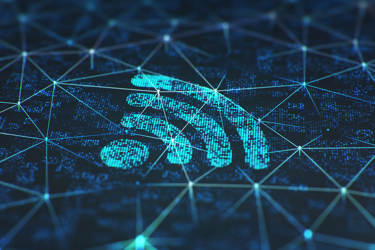Extending The Reach And Coverage Of IoT Networks With Wi-Fi HaLow
By Michael De Nil, Morse Micro

Wi-Fi has become an essential part of our smart, connected world, providing ubiquitous internet access for people everywhere – at home, at work, and on the go. However, one of the biggest challenges of conventional Wi-Fi is its inadequate range. Wi-Fi signals at 2.4, 5, and 6 GHz can only cover a limited area before the connections start to drop. This can be a problem for businesses that require internet access over wider areas, for people who live in large houses or apartments, or for IoT devices that require both long-range connectivity and low power consumption.
What Is Wi-Fi HaLow?
Wi-Fi HaLow is a new version of Wi-Fi based on the IEEE 802.11ah standard, certified by the Wi-Fi Alliance, and developed to address the challenges of conventional Wi-Fi. It provides an optimal combination of long-range connectivity, signal penetration, and low power consumption required for IoT applications. Wi-Fi HaLow is specifically designed to provide Wi-Fi access over a wider area, making it ideal for IoT devices that require reliable connectivity over longer distances and long battery life.
One of the key advantages of Wi-Fi HaLow is its ability to operate in environments where other wireless signals may be disrupted. This is because Wi-Fi HaLow uses license-exempt frequencies below 1 GHz instead of the higher frequencies (e.g., 2.4, 5, and 6 GHz) used by other versions of Wi-Fi (e.g., Wi-Fi 4/5/6). The use of the sub-GHz band enables a longer range and better signal penetration through walls and other physical barriers. This makes Wi-Fi HaLow ideal for use in large buildings, warehouses, and other locations where traditional Wi-Fi coverage may be weak or unreliable.
Why Is It Important To Choose Suitable IoT Connectivity?
Wi-Fi HaLow signals can travel much farther than many other protocols, even reaching distances beyond 1 km (0.62 miles), which is about ten times the range of traditional Wi-Fi networks. This means that Wi-Fi HaLow-enabled devices can be placed farther apart and still maintain reliable connections. Wi-Fi HaLow also can be used for wireless backhaul, where it can provide a cost-effective option for transmitting data over long distances without the need for expensive fiber-optic cables or direct microwave links.
In addition, Wi-Fi HaLow is designed to be energy-efficient, which means it can help extend the battery life of IoT devices. This is achieved through a range of power-saving features, including the ability to stay longer in low-power mode when not actively transmitting data. This allows battery-powered wireless devices to operate for longer periods without requiring new batteries or recharging.
Another area where Wi-Fi HaLow is gaining traction is in consumer access points. Adding Wi-Fi HaLow to existing access points can provide greater coverage and reach in homes, apartments, and other residential settings. With Wi-Fi HaLow-enabled access points, consumers can enjoy internet access in every corner of their homes and yards, even in areas that are generally difficult to reach with traditional Wi-Fi networks.
Wi-Fi HaLow also can be used for video and security cameras deployed over long distances in and around homes. With traditional Wi-Fi networks, video and security cameras can sometimes experience lags or dropped connections, especially when placed far away from the access point. With Wi-Fi HaLow, these camera devices can maintain reliable connections over long distances, providing consumers with greater peace of mind and security.
Wi-Fi HaLow is an ideal solution for applications requiring long-range connectivity. Its longer range and better penetration through obstacles make Wi-Fi HaLow perfect for use in environments where traditional Wi-Fi signals may be weak or disrupted. The protocol’s energy-efficient design also makes it an ideal choice for battery-powered IoT devices that require long battery life. As consumers and businesses deploy more and more connected devices, Wi-Fi HaLow is poised to become an essential IoT protocol in the coming years.
About The Author
Michael De Nil is the cofounder and CEO of Morse Micro. He played a key role in the digital chip development of the 802.11 Wi-Fi chips found in most modern smartphones and had 10 years of experience in low-power digital IC design at imec and Broadcom before founding Morse Micro.
